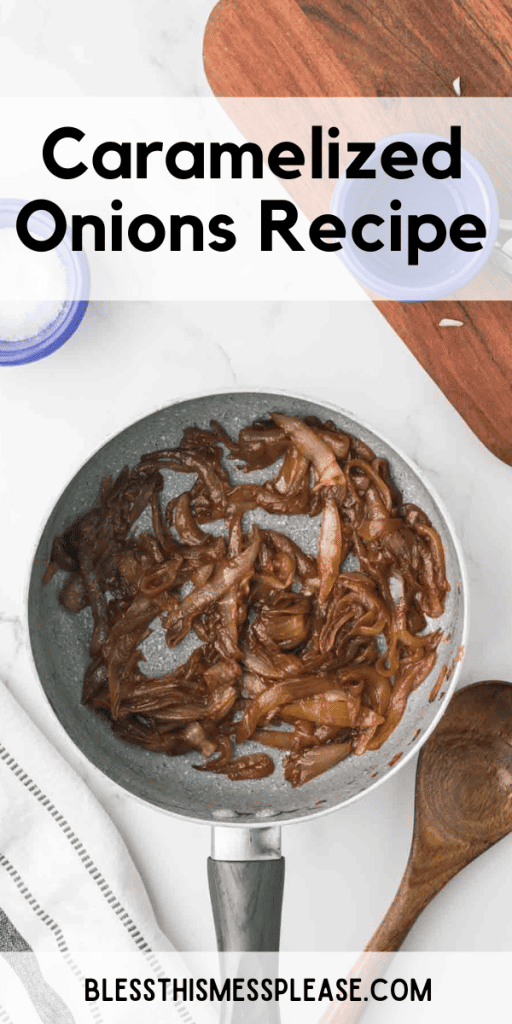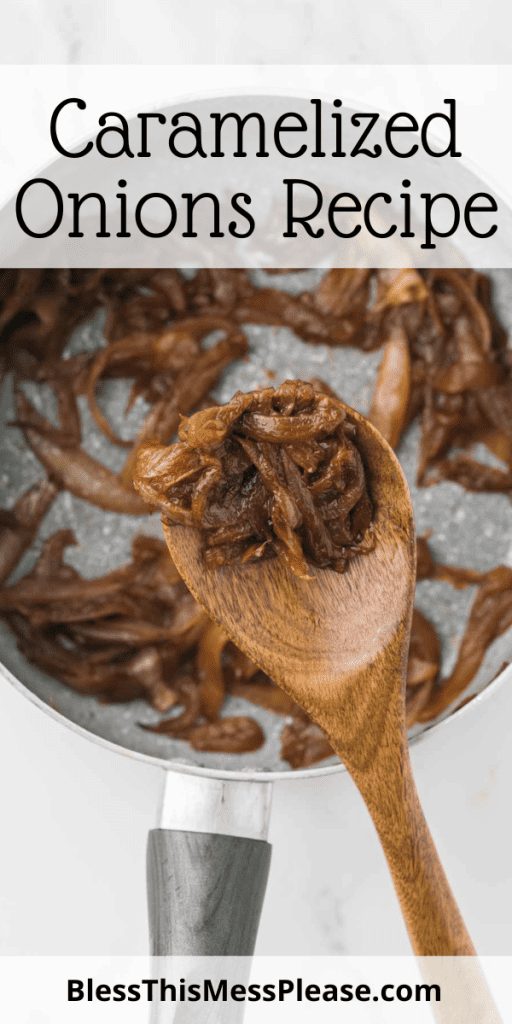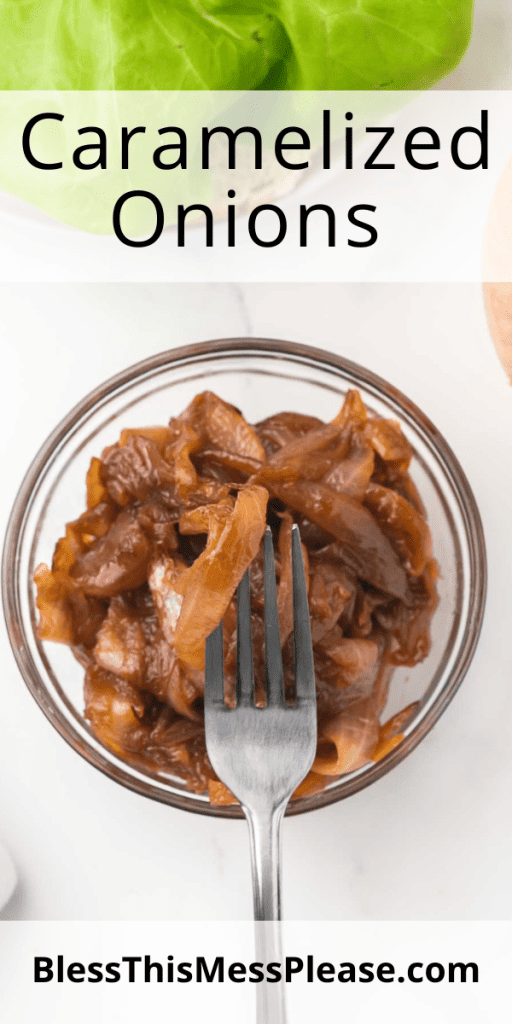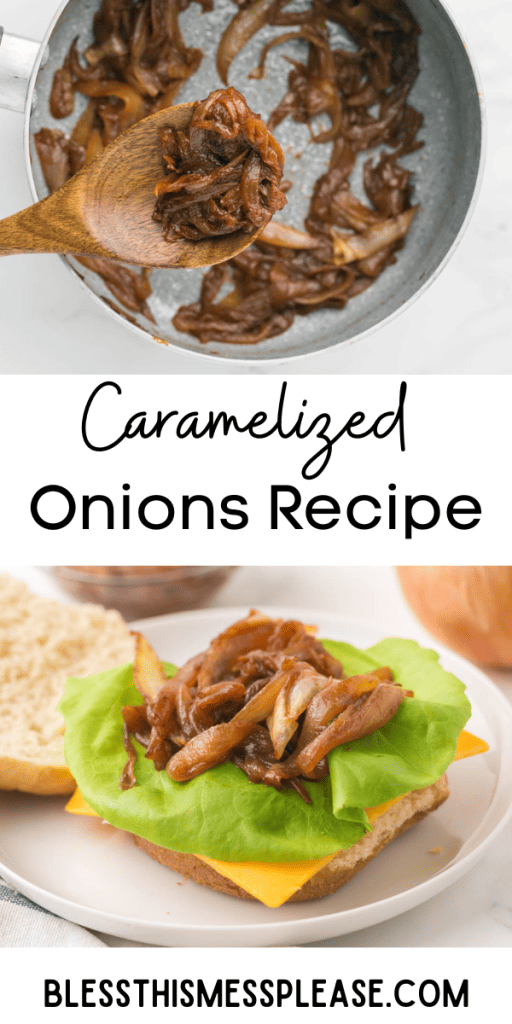Caramelized Onions
on Oct 23, 2023, Updated Apr 11, 2024
This post may contain affiliate links. Please read our disclosure policy.
Caramelized Onions are like a magic trick for your food. They start as simple, raw onions and transform into sweet, golden-brown delicacies with a taste that can make a regular dish feel gourmet. Think about them as the sprinkle of fairy dust on your meals!
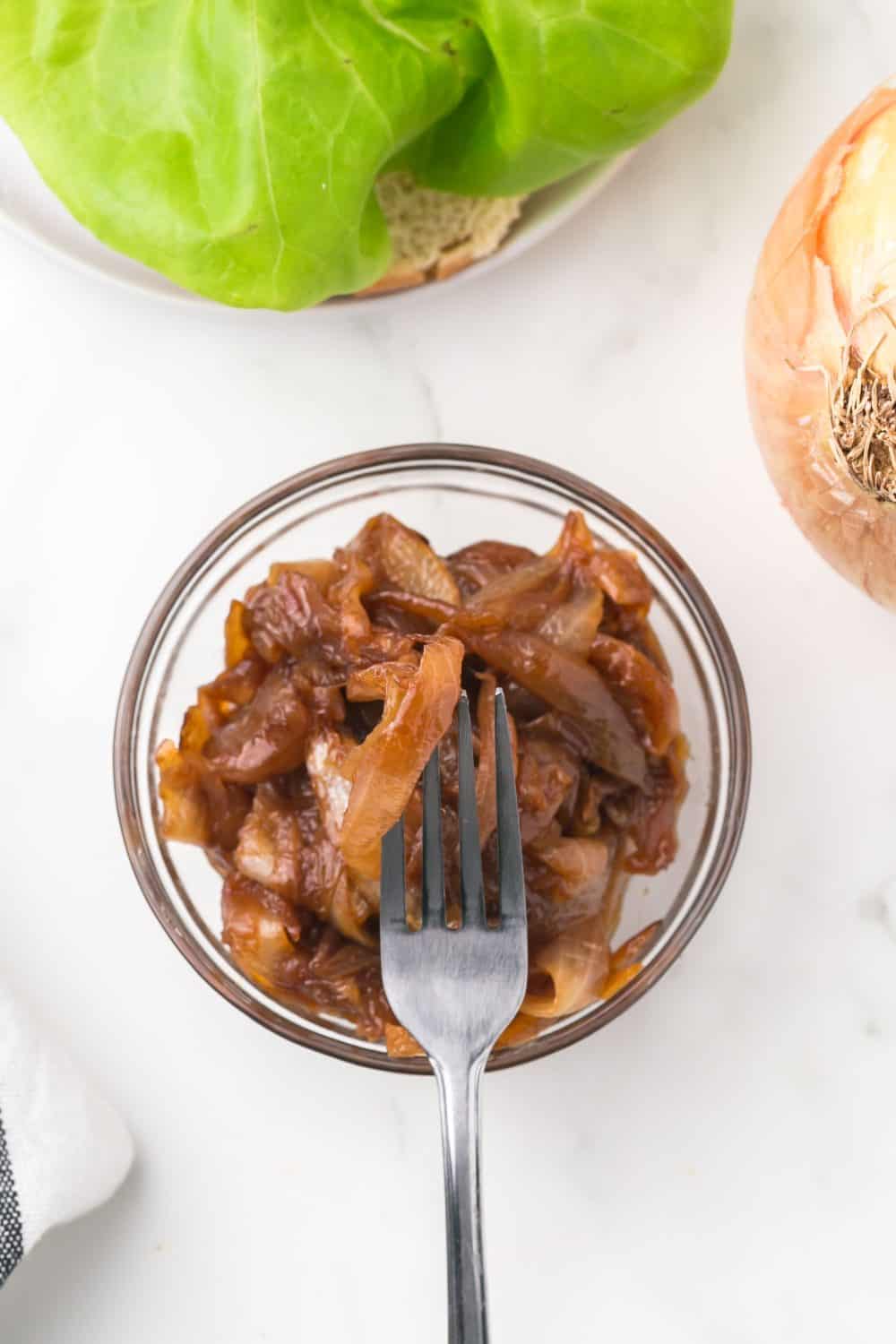
Caramelized onions are a culinary delight, transforming the pungent raw onion into a sweet, rich, and deeply flavored treat through the magic of slow cooking. The process of caramelization releases the onions’ natural sugars, resulting in a melt-in-your-mouth texture and a golden-brown hue.
These onions are a versatile topping and enhance various dishes. They taste fantastic on burgers, pizzas, in pastas, sandwiches, and even as a sumptuous addition to salads or a side with grilled meats. Their sweet-savory flavor profile can elevate even the simplest of meals to gourmet status.
Table of Contents
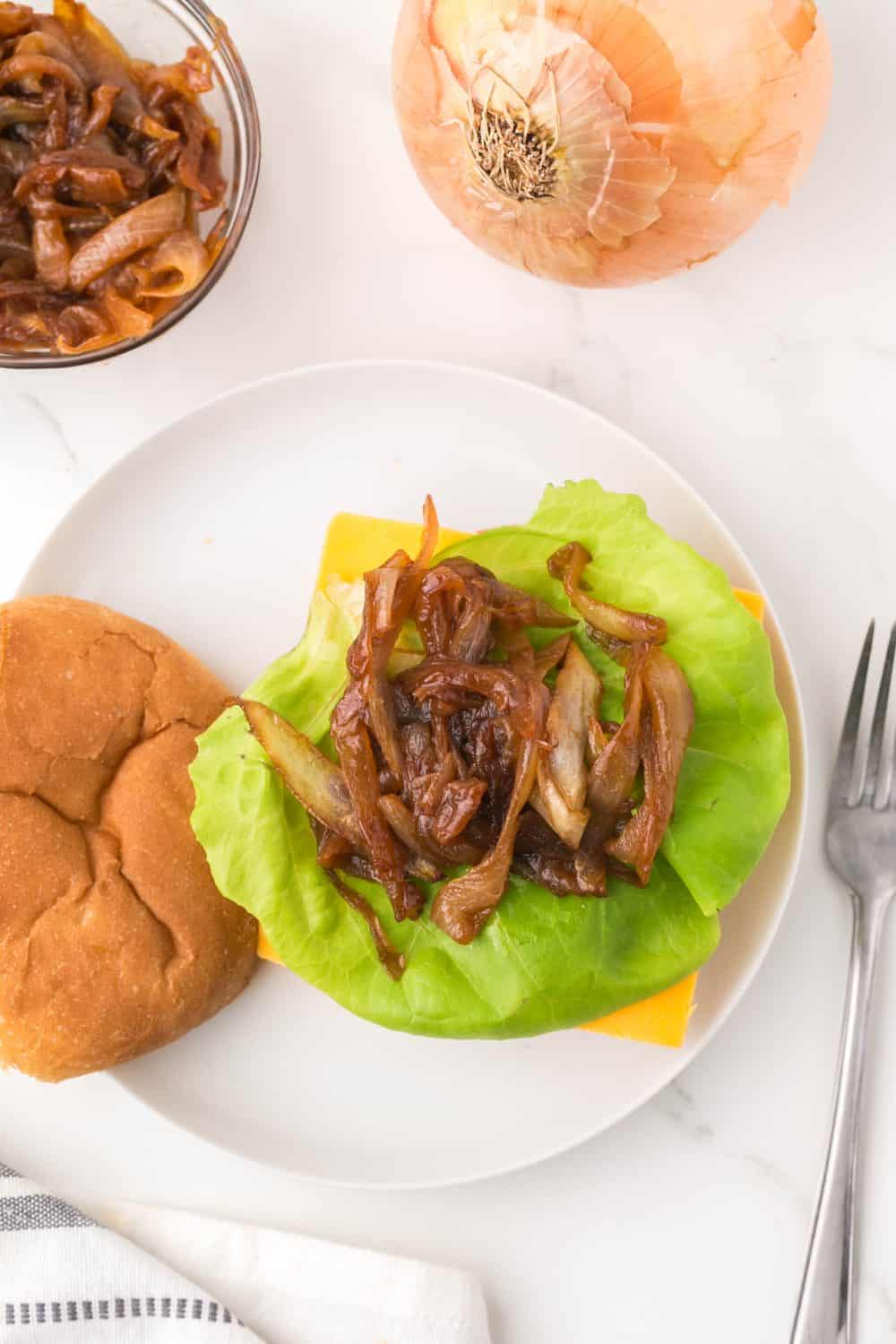
Why You’ll Love This Recipe
- Taste: They’re sweet with a hint of savory – a flavor combo many people love.
- Versatility: You can add them to burgers, pizzas, sandwiches, pastas, and more!
- Texture: Soft and a bit gooey, they melt right in your mouth.
Recipe Ingredients
- Onions (any type, but yellow or white onions are popular choices)
- Butter or oil (like olive oil or vegetable oil)
- A pinch of salt
- Patience (Yes, patience is an ingredient! We’ll explain why soon.)
See the recipe card for full information on ingredients and quantities.
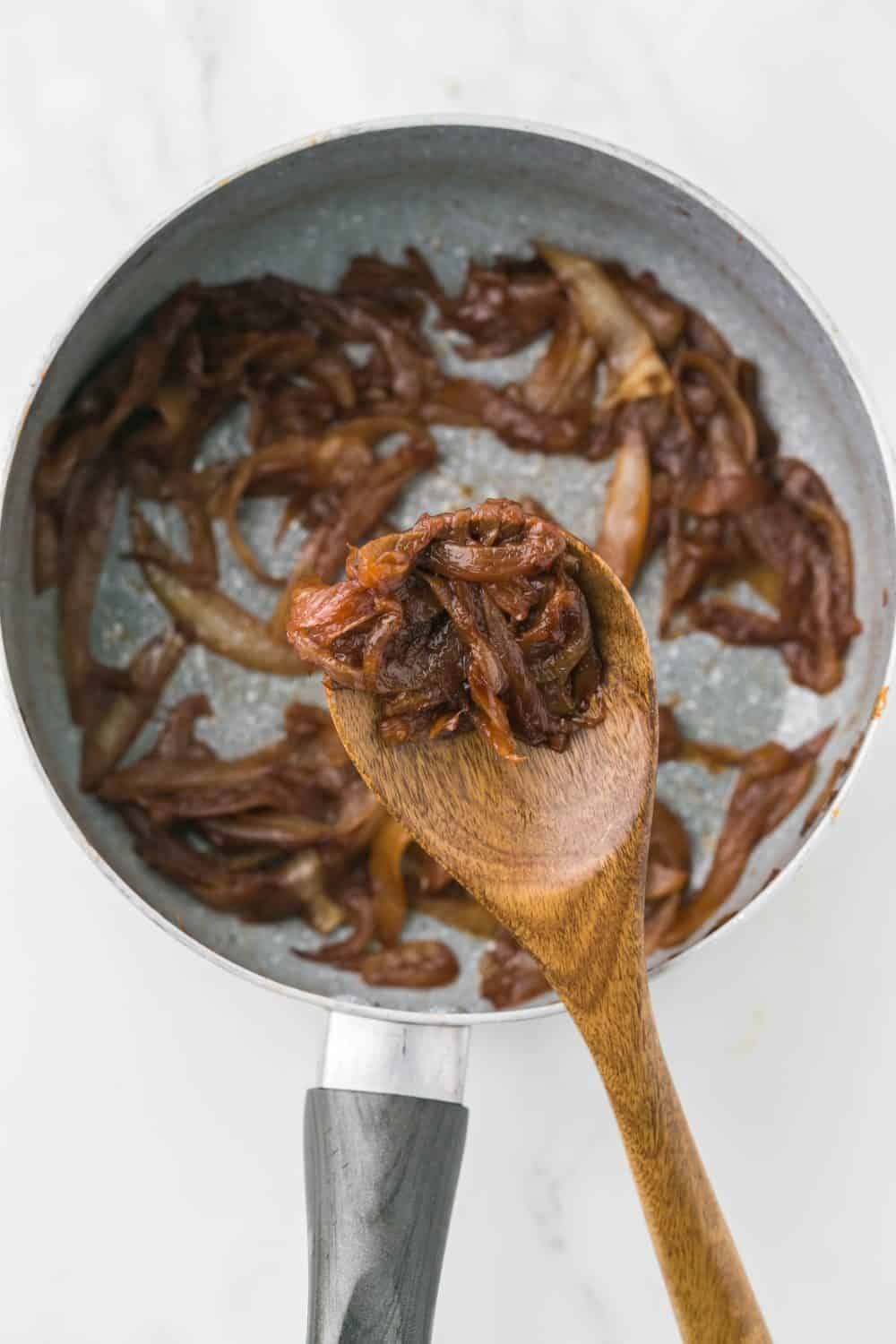
Popular Substitutions and Variations
- Using Different Fats: Some folks prefer using coconut oil, ghee, or even bacon fat to caramelize onions. Each gives a unique flavor!
- Adding Flavors: For an extra touch, you can add ingredients like garlic, herbs (like thyme or rosemary), or even a splash of balsamic vinegar.
- Different Onions: Beyond the standard yellow or white onions, you can also try red onions, shallots, or sweet Vidalia onions for different tastes and textures.
How To Make Caramelized Onions
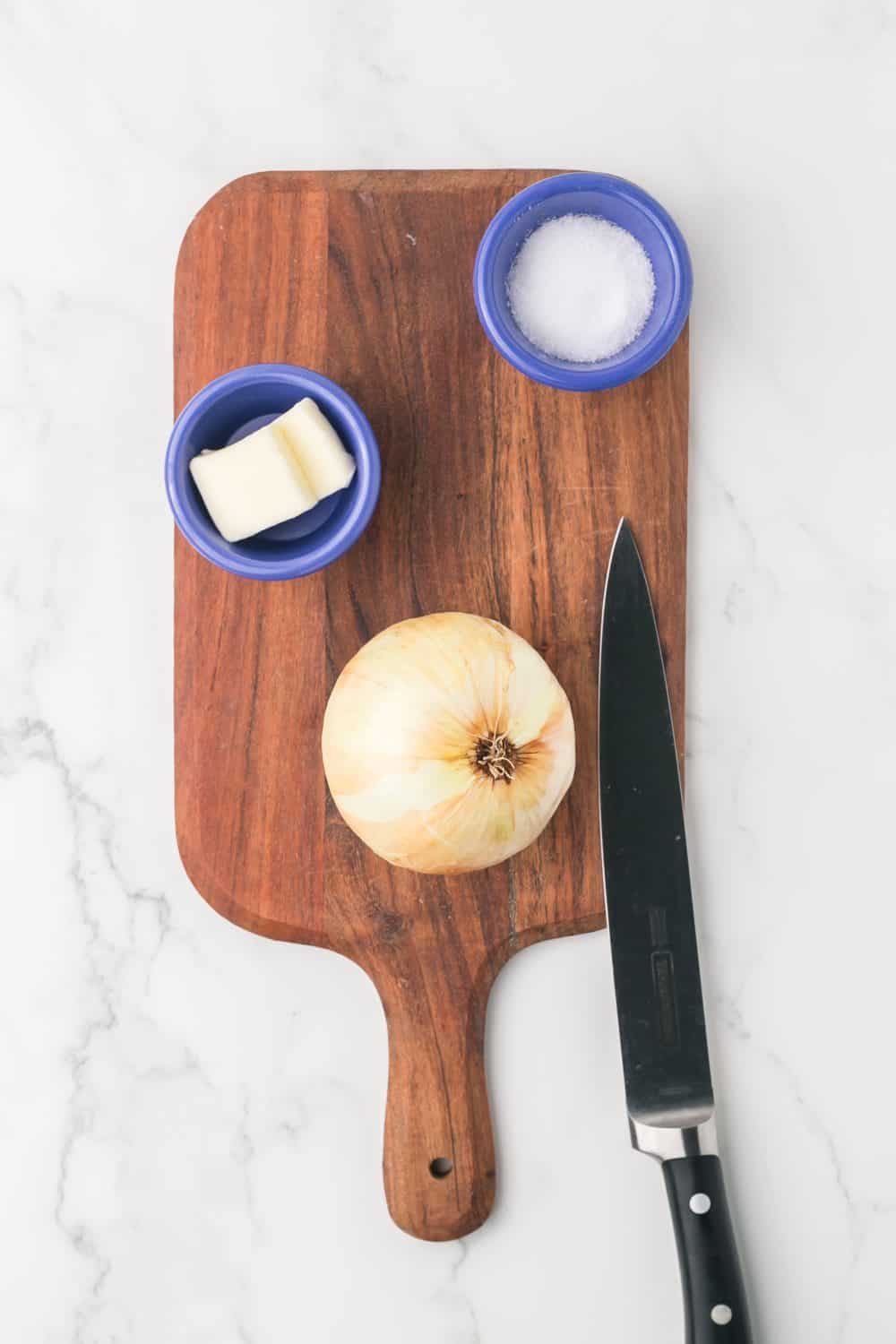
Step #1. Peel the onion and cut off the ends.
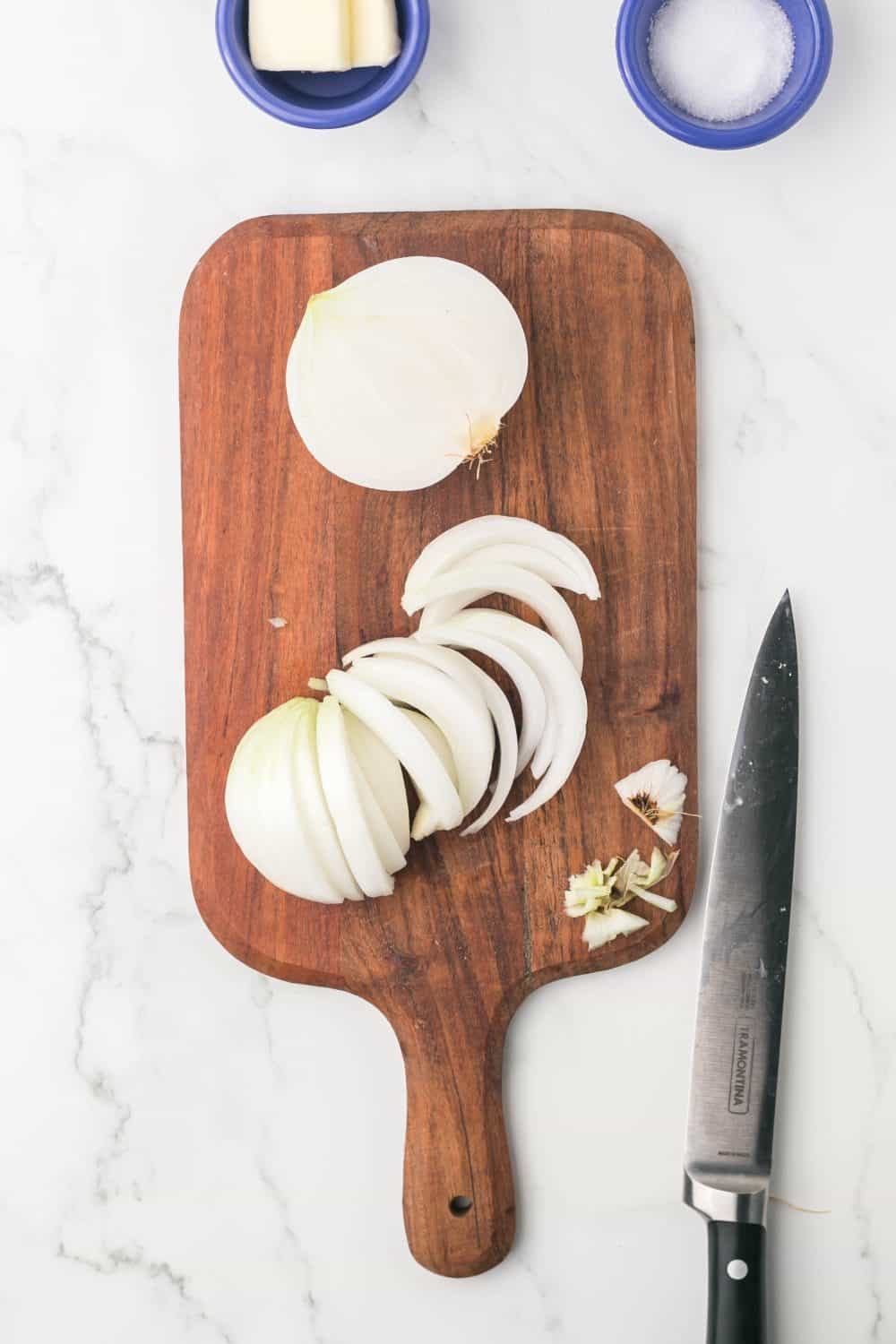
Step #2. Slice them thinly into even rings or strips.
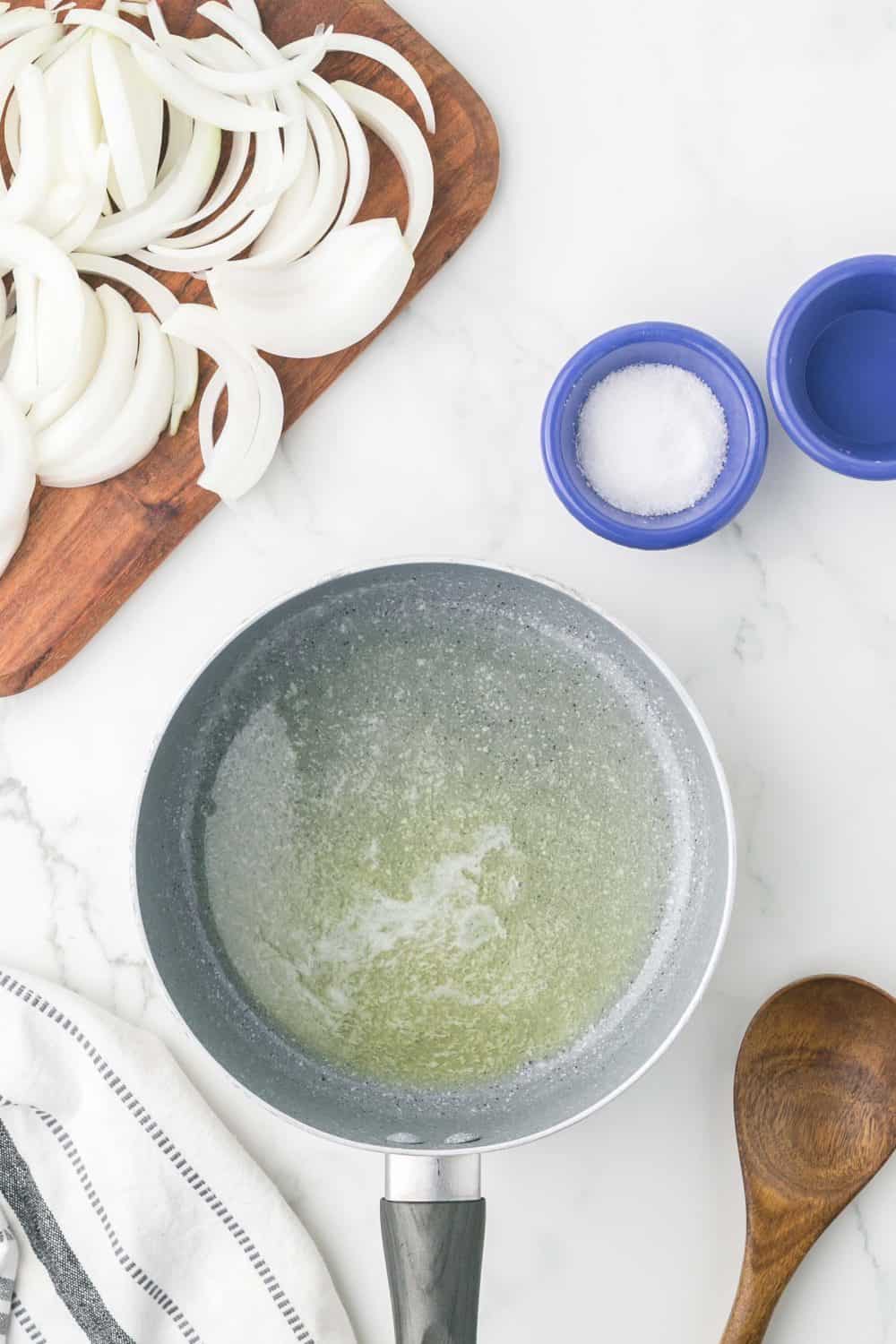
Step #3. In a medium-sized, heavy-bottomed pot, heat the butter over medium-low heat. Allow the butter to melt completely.
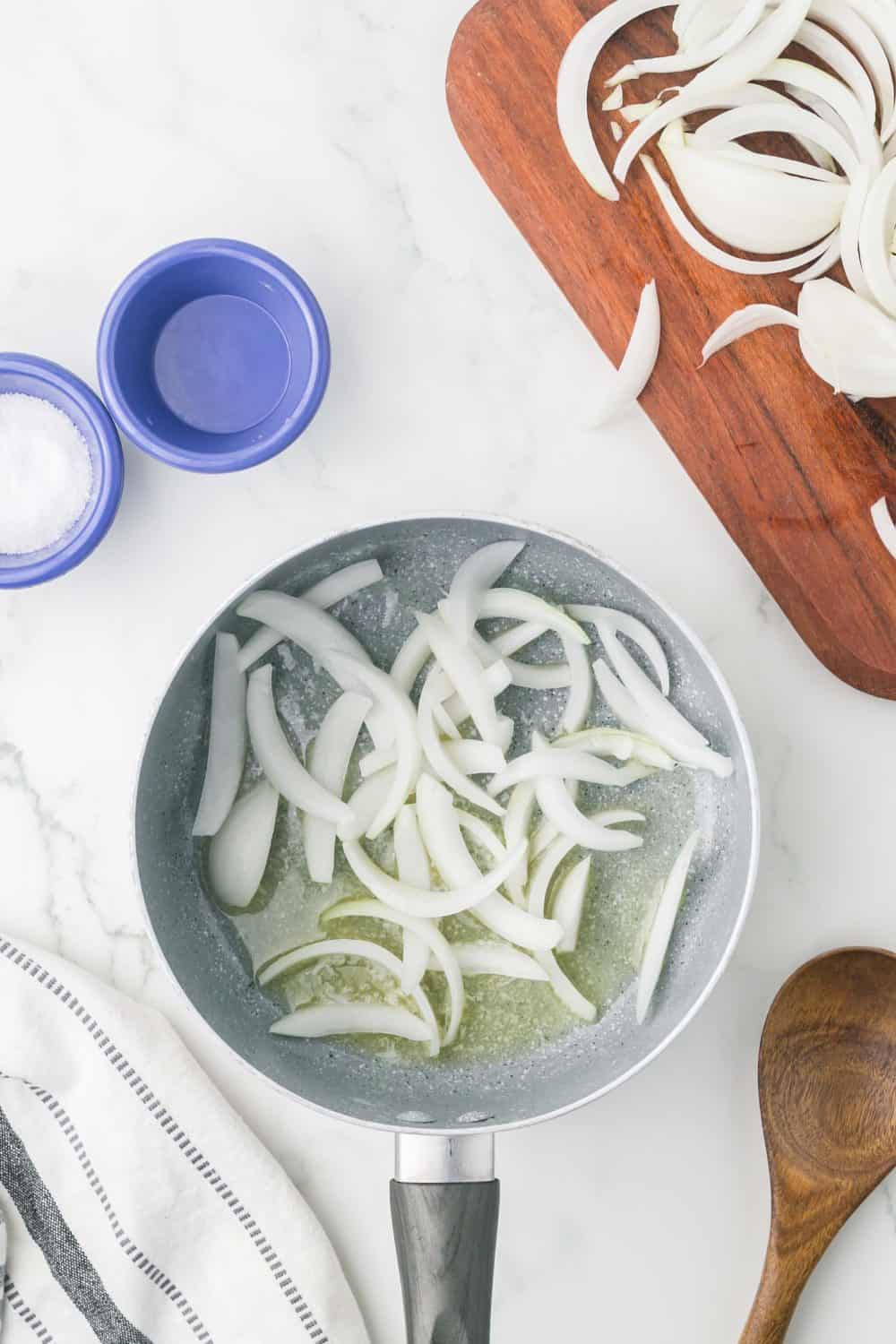
Step #4. Begin by adding half of the sliced onions to the pot. Stir to coat them evenly with the butter and oil. Sprinkle with a pinch of salt.
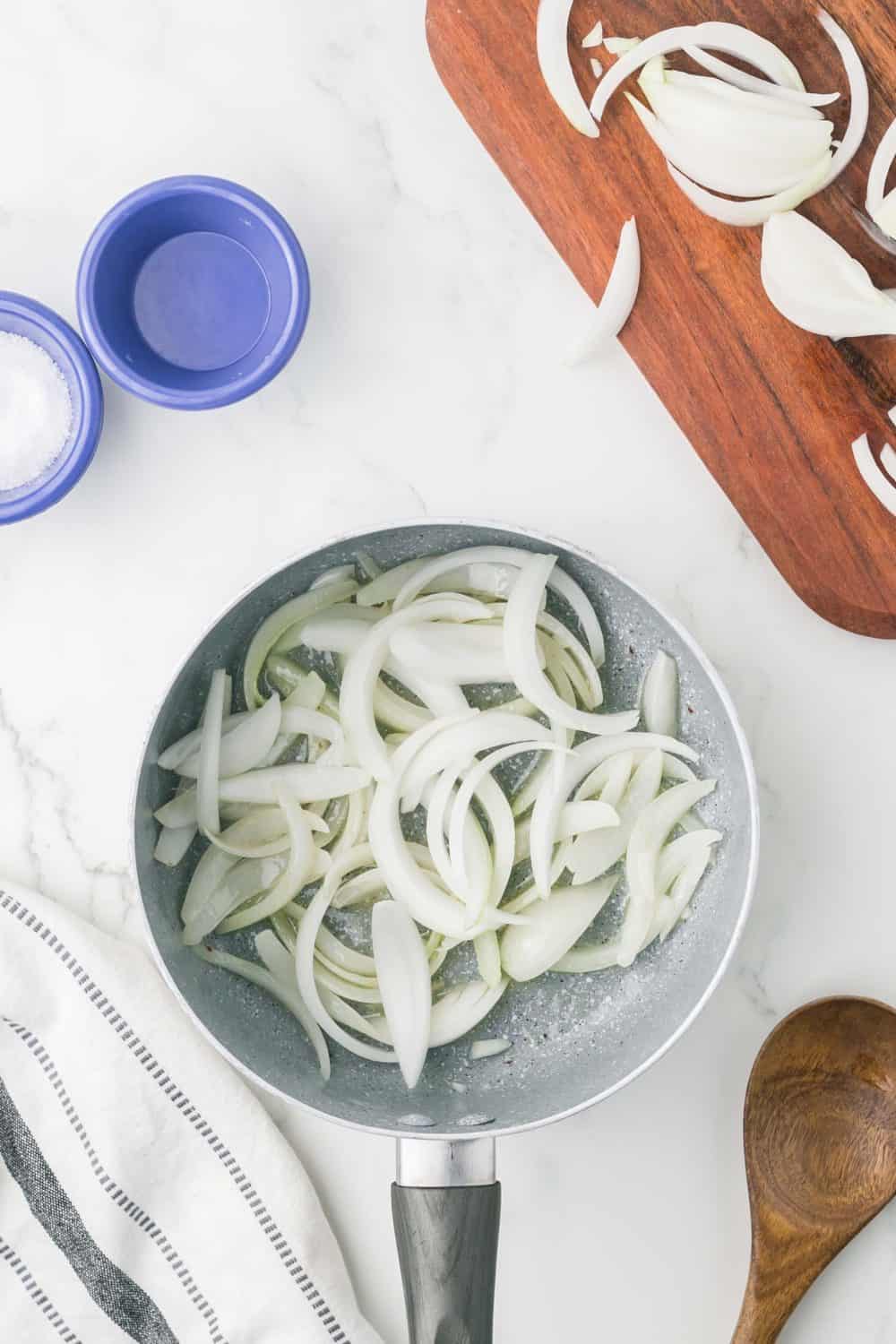
Step #5. Slowly add the remaining half of the onions. You may need to cook in batches depending on your pan size and amount of onions, do not overcrowd the pot.
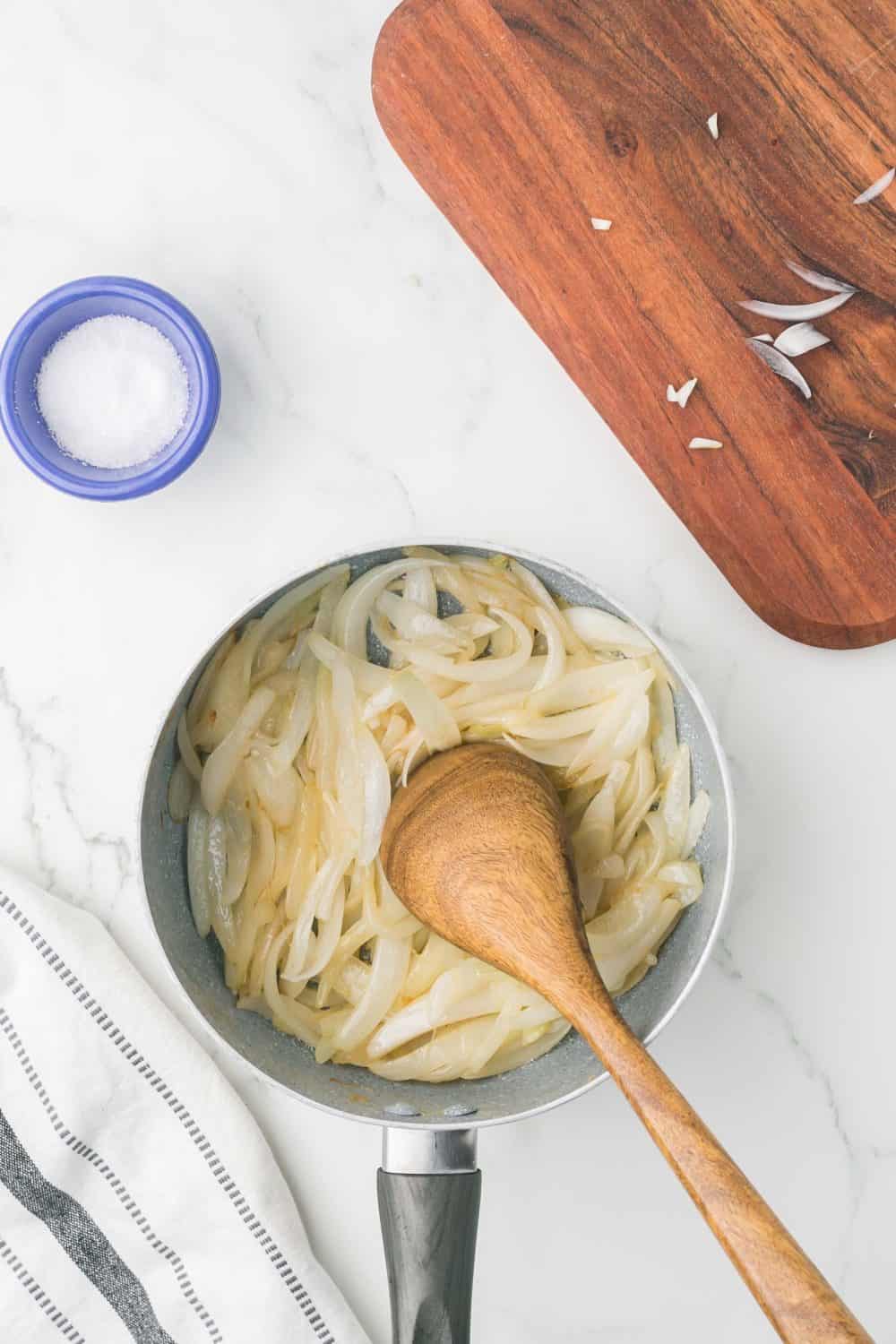
Step #6. Cook the onions over medium-low heat in the pot, stirring occasionally. It’s crucial to cook them slowly to caramelize properly. First, onions will become soft and translucent, then they will gradually turn golden brown.
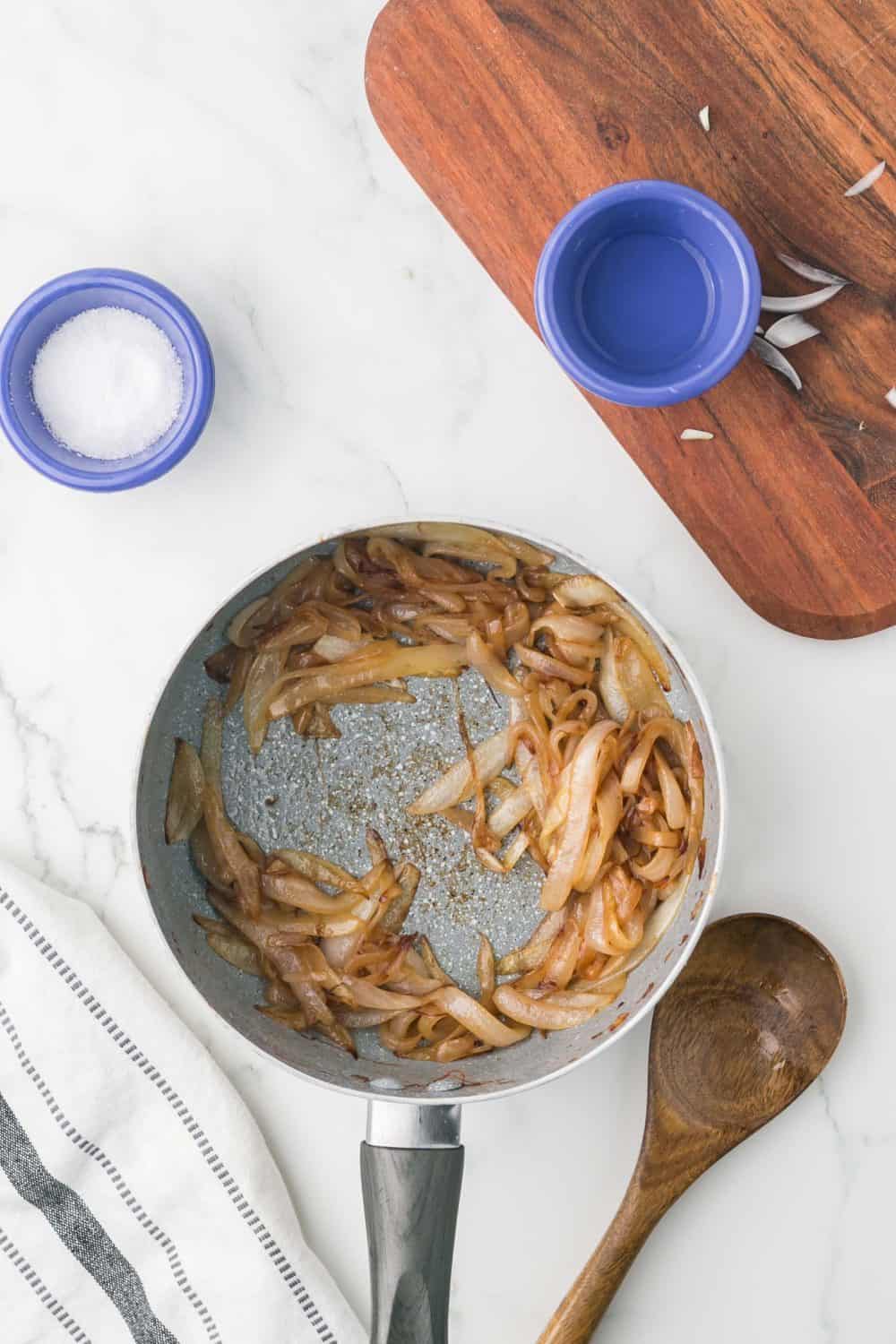
Step #7. Caramelizing onions takes time. It can take anywhere from 30 to 40 minutes. Stirring every few minutes helps ensure even cooking.

Step #8. Taste the onions as they cook. Once they’ve caramelized to your liking and have a sweet, rich flavor, you can add more salt to taste.
Recipe FAQs
Yellow onions are most commonly used for caramelizing due to their balanced flavor, but red or sweet onions work well too.
Yes, you can make caramelized onions ahead of time and store them in an airtight container in the refrigerator for up to a week or freeze them for several months.
Caramelized onions are versatile and can be used in dishes like burgers, sandwiches, pizzas, quiches, soups, stews, and as a topping for meats and vegetables.
While butter or oil is commonly used, you can caramelize onions with vegetable oil or even dry caramelization (using no added fats), although the process may differ slightly.
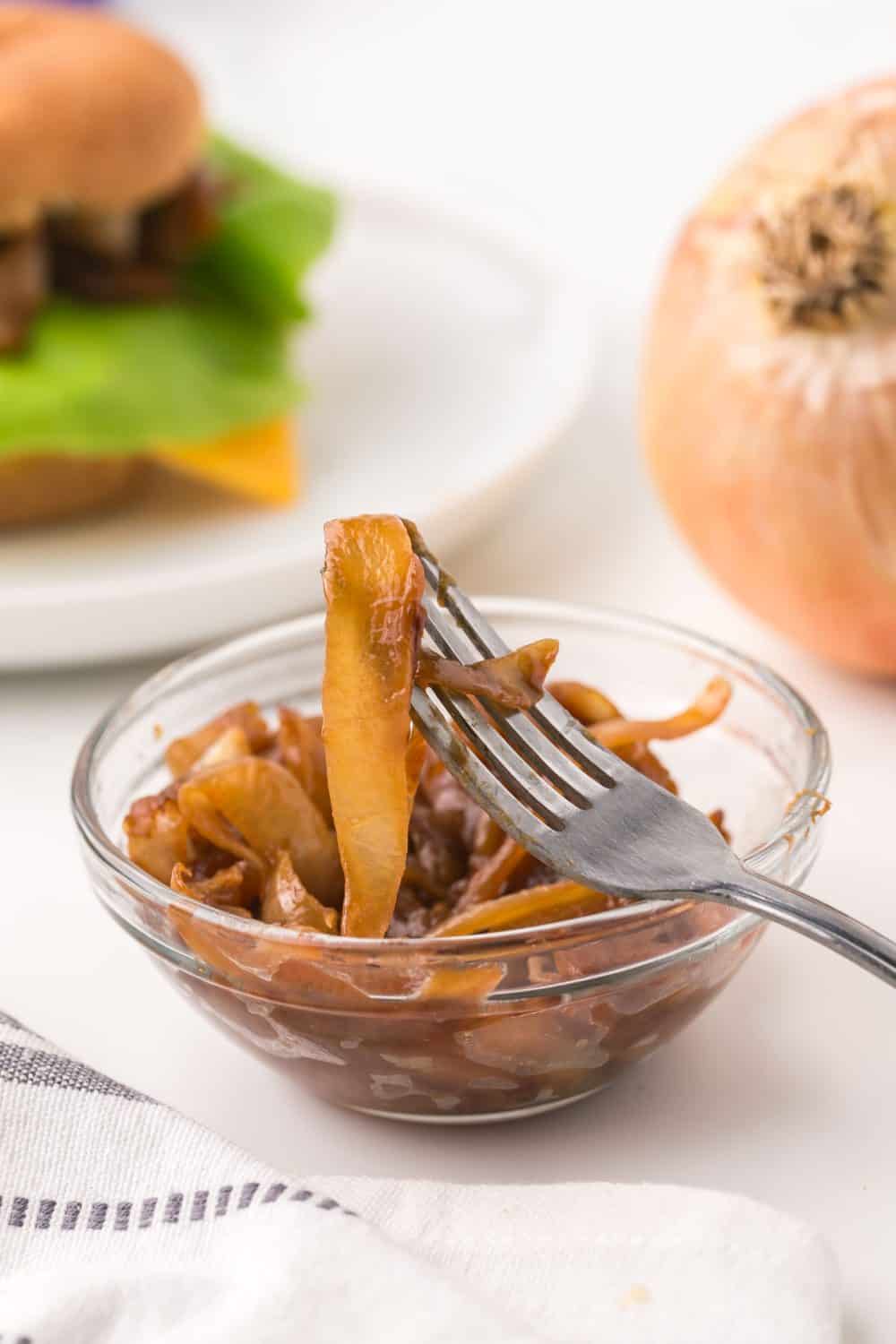
Expert Tips
- The key is to cook the onions on low heat for a long time. High heat can burn them.
- If you use too many onions at once, they might steam instead of caramelize.
- Keep stirring! This helps prevent the onions from sticking to the pan or burning.
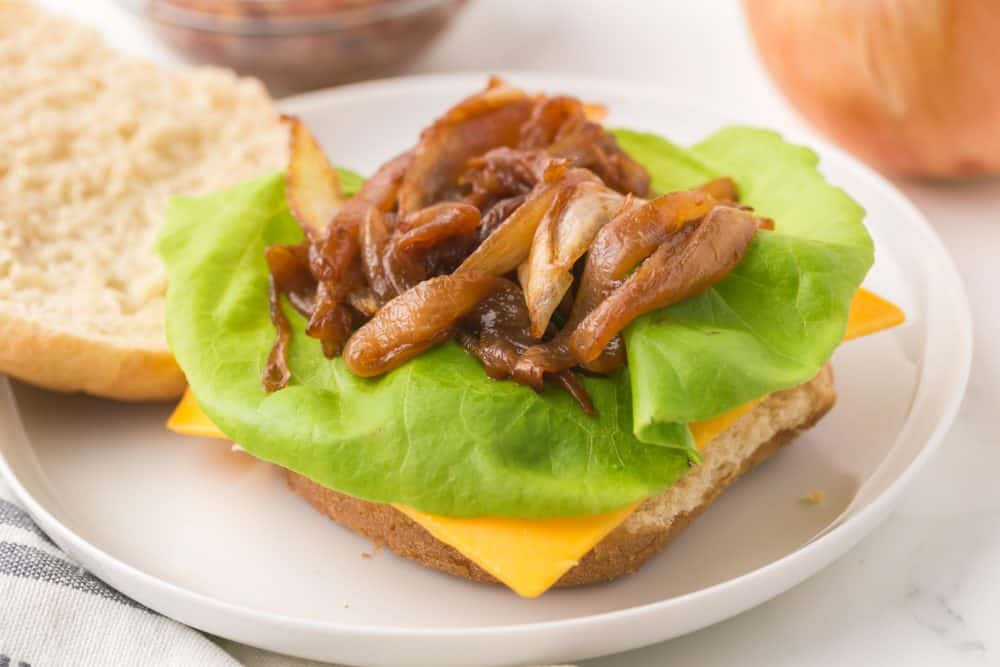
How To Prevent Onions From Burning
To prevent burning during the caramelization process, adjust the heat to medium-low, stir occasionally, and add a splash of water if necessary to deglaze the pan and prevent sticking.
Are Caramelized Onions the Same as Sautéed Onions?
No, caramelized onions are cooked much longer than sautéed onions, allowing them to develop a sweet, deep flavor and browned color.
Did you make this recipe? Leave a ⭐️ review and share it on Instagram, Facebook, or Pinterest!
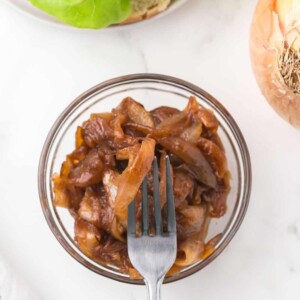
Caramelized Onions
Ingredients
- 1 onion, large or 2 medium onions
- 1 tablespoon butter
- Salt to taste
Instructions
- Peel the onion(s) and cut off the ends. Slice them thinly into even rings or strips.
- In a medium-sized, heavy-bottomed pot, heat the butter over medium-low heat. Allow the butter to melt completely.
- Begin by adding half of the sliced onions to the pot. Stir to coat them evenly with the butter and oil. Sprinkle with a pinch of salt if desired (you will adjust the seasoning later). Slowly add the remaining half of the onions. (You may need to cook in batches depending on your pan size and amount of onions, do not overcrowd the pot.)
- Cook the onions over medium-low heat in the pot, stirring occasionally. It’s crucial to cook them slowly to caramelize properly. The onions will go through several stages: first, they will become soft and translucent, then they will gradually turn golden brown.
- Caramelizing onions takes time. Depending on your desired level of caramelization, it can take anywhere from 30 to 40 minutes. Stirring every few minutes helps ensure even cooking.
- If the onions start to brown too quickly, reduce the heat to prevent burning. If they’re not browning at all, increase the heat slightly.
- Taste the onions as they cook. Once they’ve caramelized to your liking and have a sweet, rich flavor, you can add more salt to taste. If desired, you can also add a pinch of pepper for extra flavor.
- Once the onions have reached your desired caramelization, remove them from the pot. They are now ready to use as a topping for burgers, sandwiches, steaks, or as a addition to various dishes like soups and stews.
Notes
- The caramelization process requires patience. Avoid the temptation to increase the heat to speed up the process, as this can lead to burning rather than true caramelization.
- If you prefer, olive oil or a mix of butter and oil can be used for a different flavor profile or for dietary preferences.
- If your pot isn’t large enough to hold all the sliced onions without crowding, consider cooking them in batches to ensure even caramelization.
- Caramelized onions can be stored in an airtight container in the refrigerator for up to a week. They can also be frozen; simply thaw and reheat before using.
- Caramelized onions add a rich, savory flavor to a variety of dishes like burgers and steaks. Get creative and try them on grilled cheese sandwiches, pizzas, or mixed into mashed potatoes for an extra layer of flavor.

